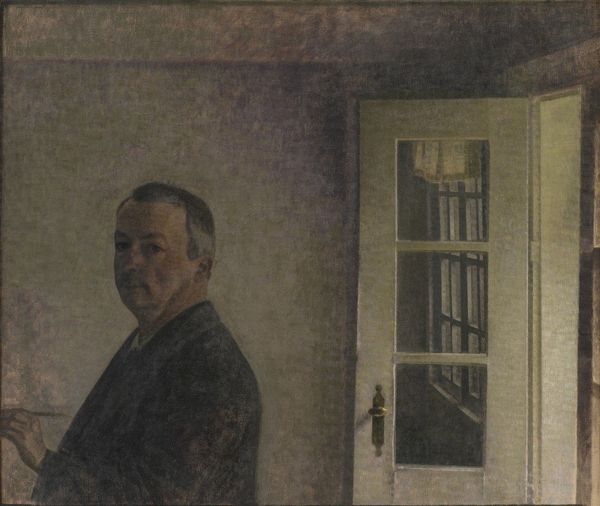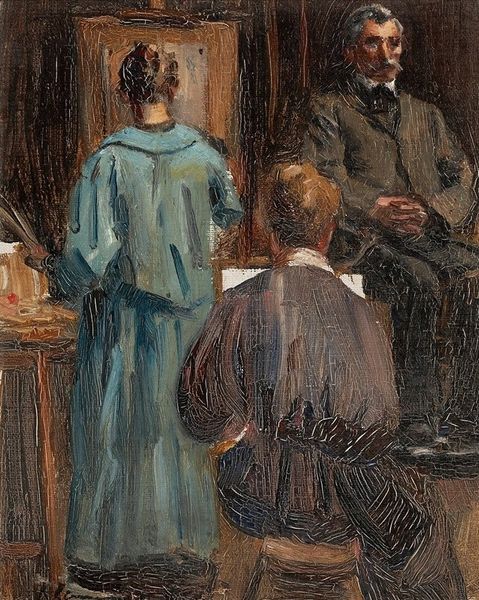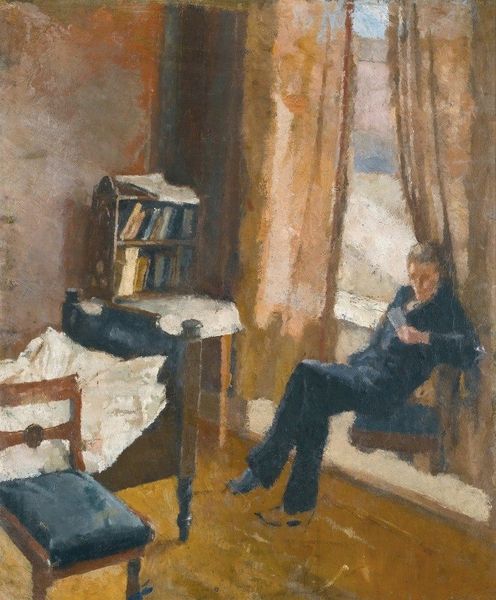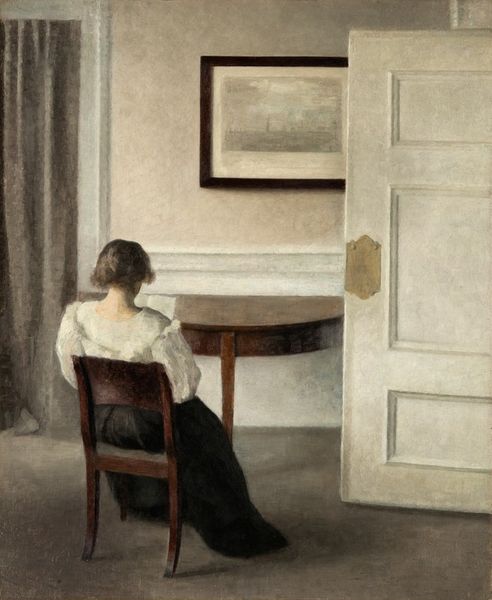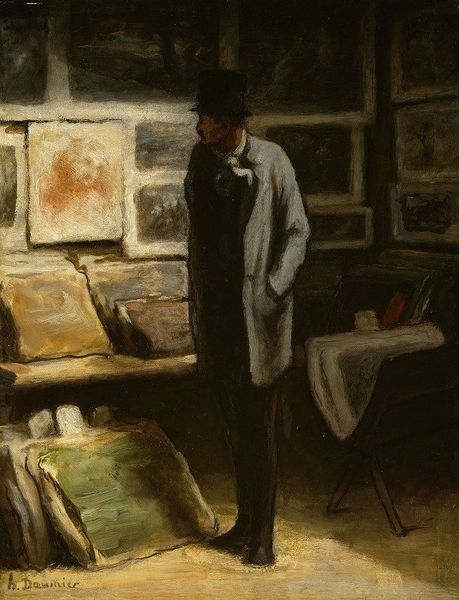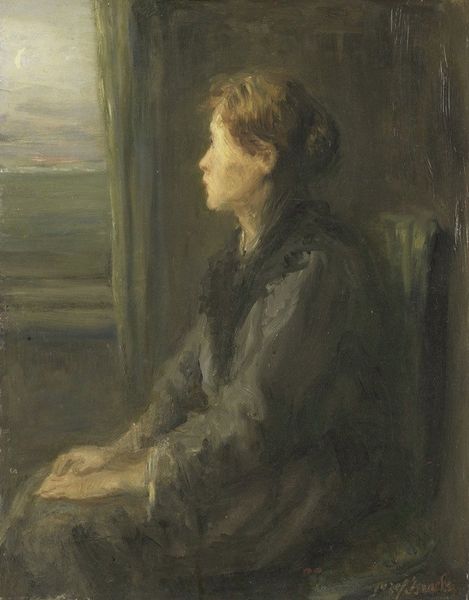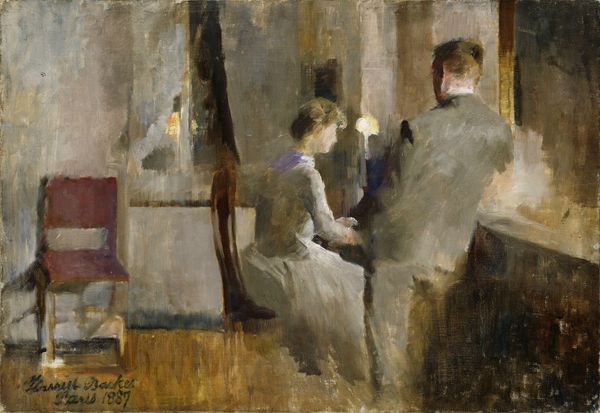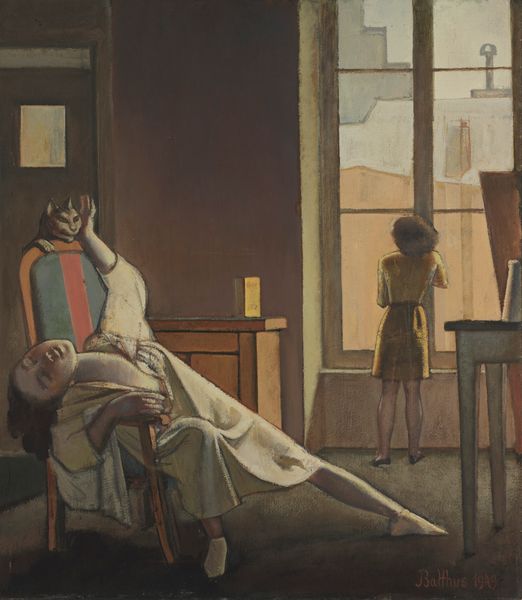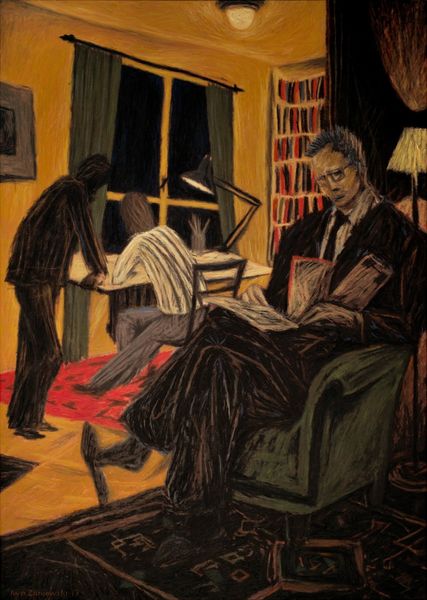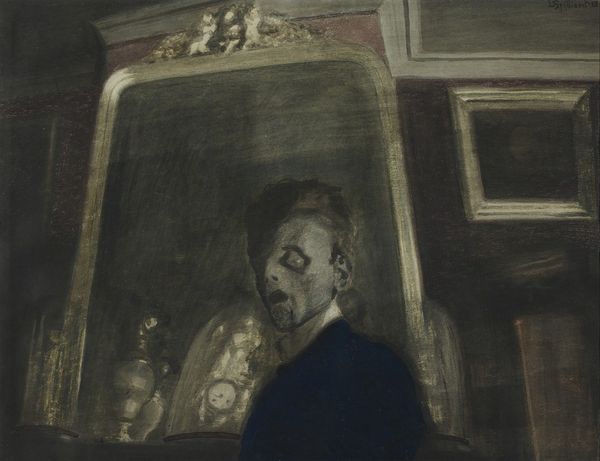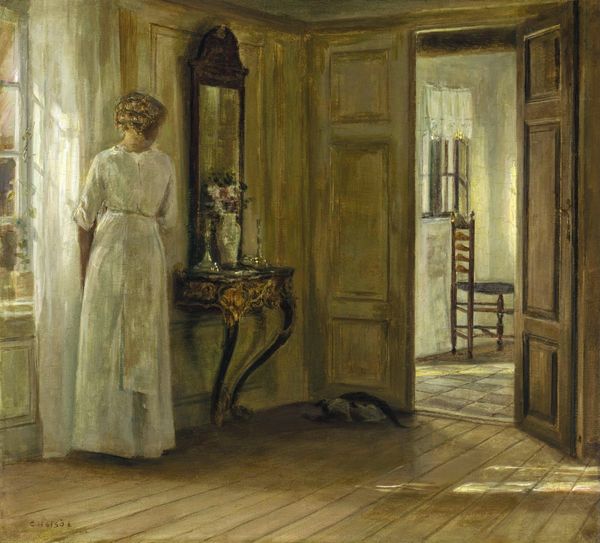
painting, oil-paint
#
portrait
#
figurative
#
painting
#
oil-paint
#
figuration
#
oil painting
#
group-portraits
#
romanticism
Copyright: Public Domain: Artvee
Curator: Vilhelm Hammershøi’s "Interior with the Artist and His Wife" presents us with a muted scene, rendered in oil paint. The piece exemplifies Hammershøi's signature style, but there is no data to contextualize the moment this artwork was made. Editor: My initial impression is one of quiet melancholy. The color palette is so restricted, almost entirely gray and white, which adds to this feeling of introspective solitude, even with two figures present. Curator: Hammershøi repeatedly returned to similar domestic interiors, exploring light and shadow in minimalist compositions. His wife, Ida, frequently appears in these works, often seen from behind. He’s a master of atmospheric perspective. Editor: It’s a voyeuristic experience for us, but also for the artist himself, if we’re to take it as a self-portrait of sorts. Her turned back feels like a deliberate withholding, a visual metaphor for the unspoken dynamics within their relationship, and the role women play inside of their domestic environments. What are your thoughts about how women were represented in paintings, especially their role within their home? Curator: Absolutely, the position of Ida, with her back facing us, has intrigued art historians. It evokes a sense of mystery and distance, suggesting a complex, possibly even strained, emotional landscape within the domestic sphere. The artist inserts himself into the canvas. Editor: I also wonder about the larger societal implications here. Hammershøi was working during a period of significant social change. Are these paintings a deliberate retreat from the rapid modernization of the world outside, or perhaps a commentary on the limited roles available to women? How were spaces defined in this period? Curator: I would say both readings hold weight. Hammershøi's interiors often represent a refuge from the industrialized world, a sanctuary of quiet contemplation. But his restrictive palette and simplified forms are of his period, yet create distance to our eye. This is especially relevant if we contrast Hammershøi to other Scandinavian artists that time, for example, Edvard Munch. Editor: Food for thought. These paintings leave us to observe not only how personal emotions have been put in display, but the evolution of modern gender studies too. Curator: A valuable look into that quiet moment of introspection. Editor: Exactly, revealing the many quiet anxieties around social matters of that period.
Comments
No comments
Be the first to comment and join the conversation on the ultimate creative platform.
